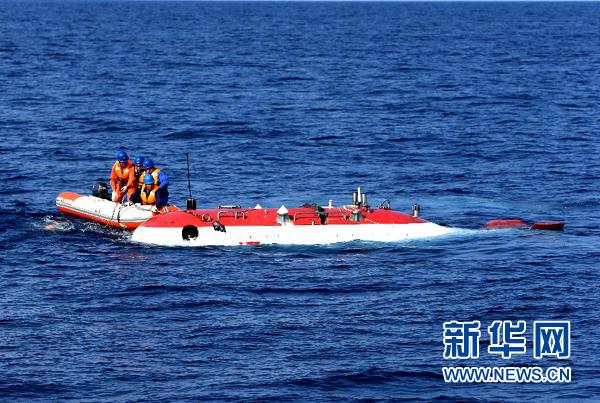Jiaolong retrieves seamount sample in S. China Sea
 0 Comment(s)
0 Comment(s) Print
Print E-mail Xinhua, April 30, 2017
E-mail Xinhua, April 30, 2017
|
|
|
Jiaolong, China's manned submersible, retrieved a basalt sample from the Zhenbei Seamount in the South China Sea. [Photo/Xinhua] |
Jiaolong stayed underwater for nine and a half hours in its third dive in the second stage of China's 38th ocean scientific expedition, which will last until May 13.
The maximum depth of the dive was 2,930 meters beneath the sea surface.
Aside from the five-kilogram basalt sample, it also brought back samples of sediments and seawater near the seabed as well as biosamples, in addition to high-definition photos and video footages.
"It is not easy (to acquire such a basalt sample). This valuable 'rock' will lay the foundation for our study of formation and evolvement of seamounts in the South China Sea during the Cenozoic period," said Shi Xuefa, a researcher with the State Oceanic Administration.
"It is very important for the study of the region's structural evolution," Shi said.
Jiaolong has already completed two dives in the South China Sea on Wednesday and Thursday. A fourth dive has been planned on Sunday. The 38th oceanic scientific expedition started on Feb. 6. Jiaolong completed a dive in the northwestern Indian Ocean earlier this year in the mission's first stage. It will also conduct surveys in the Yap Trench and the Mariana Trench in the third stage.
Named after a mythical dragon, Jiaolong reached its deepest depth of 7,062 meters in the Mariana Trench in June 2012.







Go to Forum >>0 Comment(s)